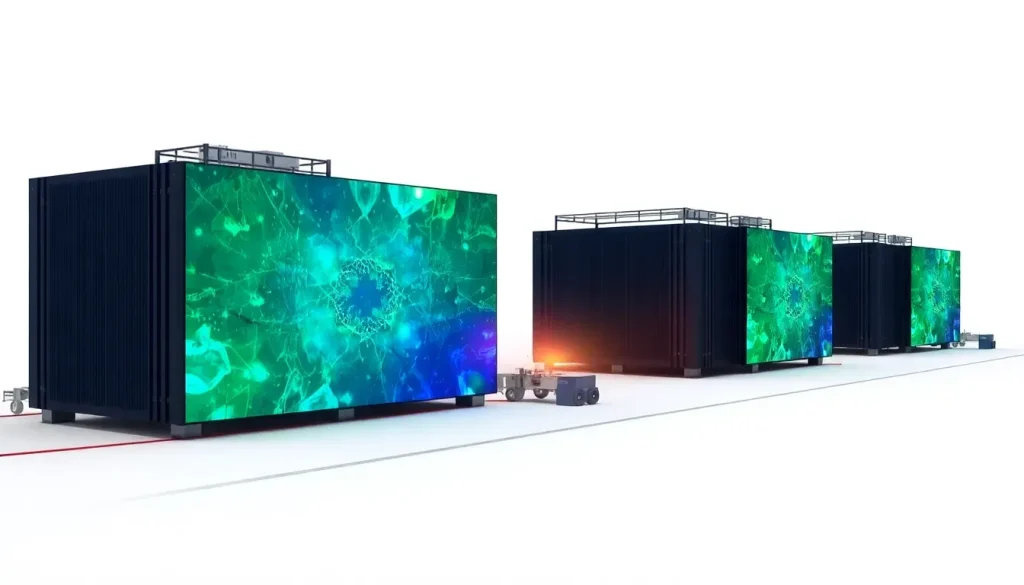ORNL Discovery and Lux Launch Powered by HPE and AMD

In the rapidly evolving world of supercomputing, two significant developments have emerged from HPE and AMD. As the demands for advanced computing capabilities increase, institutions are beginning to harness the power of AI-driven technologies. The latest announcements surrounding the Oak Ridge National Laboratory (ORNL) highlight the exciting future of high-performance computing (HPC) and the roles of Discovery and Lux systems. Let's delve deeper into what these systems entail and their implications for research and industry.
- Overview of the Discovery and Lux Supercomputing Systems
- Technical Specifications of Discovery
- The Lux AI Cluster: A New Era of AI Supercomputing
- Innovations in HPE's Supercomputing Portfolio
- Efficient Cooling Solutions in Supercomputing
- Collaboration with Intel for DAOS Storage Solutions
- Implications for Research and Industry
Overview of the Discovery and Lux Supercomputing Systems
Hewlett Packard Enterprise (HPE) is making strides in its Cray Supercomputing portfolio with the announcement of the Discovery supercomputer. This innovative system is set to replace the renowned Frontier, currently operational at ORNL. Discovery aims to push the boundaries of computational science by harnessing cutting-edge hardware and software technologies.
In tandem with Discovery, the newly unveiled AI system, Lux, promises to enhance computational efficiency and support advanced AI research. Both systems are part of HPE's strategic initiative to foster innovation in supercomputing and artificial intelligence.
Technical Specifications of Discovery
The Discovery supercomputer will be powered by AMD EPYC "Venice" processors alongside the next-generation AMD Instinct MI430X GPUs. Notably, the Venice processors are expected to debut in the latter half of 2026, establishing a new standard for processing power in high-performance computing.
- AMD EPYC Venice processors: Anticipated for 2026 release, offering improved performance.
- AMD Instinct MI430X GPUs: Enhancing compute capability and efficiency.
- Heterogeneous Computing: Allows for diverse workloads and tasks.
This combination of processors and GPUs aims to deliver unparalleled performance for complex simulations and data-intensive applications.
The Lux AI Cluster: A New Era of AI Supercomputing
The Lux AI cluster represents a significant leap forward in AI-focused computational resources. Utilizing AMD Instinct MI355X GPUs paired with HPE's ProLiant Compute XD685 nodes, Lux is designed to support advanced machine learning and AI workloads efficiently.
The integration of Pensando networking technology enhances the performance and scalability of Lux, ensuring it can meet the increasing demands of AI research. This system is geared towards leveraging PCIe Gen5 technology, which allows for faster data transfer rates and improved overall efficiency.
Innovations in HPE's Supercomputing Portfolio
To support the capabilities of Discovery and Lux, HPE is releasing several updates to its supercomputing portfolio:
- HPE Cray Supercomputing GX5000: A successor to the previous Cray EX, providing enhanced computing power per slot.
- HPE Cray Supercomputing Storage Systems K3000: A storage solution designed to handle the massive data requirements of advanced computing systems.
These innovations are crucial for organizations requiring robust computational resources for simulations, modeling, and research.
Efficient Cooling Solutions in Supercomputing
One of the most critical aspects of modern supercomputing is effective cooling. HPE is adopting advanced liquid cooling technologies in its new systems, enabling improved thermal management and energy efficiency.
Some key features of the liquid cooling system include:
- Sidecar Pump Design: Pumps are located in a sidecar configuration for redundancy and efficiency.
- Higher Inlet Temperatures: The ability to utilize warmer facility water can be a game-changer in regions with high energy costs.
- Redundancy: Ensuring continuous operation with backup systems in place.
This innovative approach not only enhances operational reliability but also aligns with the growing demand for sustainable computing solutions.
Collaboration with Intel for DAOS Storage Solutions
In a strategic move, HPE has teamed up with Intel's Distributed Asynchronous Object Storage (DAOS) team to bring advanced storage solutions to its Cray Supercomputing Storage Systems K3000. This collaboration aims to leverage DAOS's capabilities to support the demanding data storage needs of modern HPC applications.
Some advantages of integrating DAOS technology include:
- High Scalability: Designed for large-scale data environments.
- Performance Optimization: Enhanced data access speeds and reduced latency.
- Cost Efficiency: Lower operational costs through optimized resource utilization.
HPE's commitment to integrating state-of-the-art storage solutions is a testament to its focus on delivering comprehensive supercomputing systems.
Implications for Research and Industry
The announcement of Discovery and Lux signifies a substantial investment in the future of high-performance computing. These systems will facilitate groundbreaking research across various fields, including climate modeling, genomics, and artificial intelligence.
As institutions leverage these advanced computing capabilities, we can expect to see:
- Accelerated Innovation: Faster iterations in research and development processes.
- Enhanced Collaboration: Shared resources leading to collaborative breakthroughs across disciplines.
- Informed Decision-Making: Data-driven insights that can transform industries and policy-making.
The impact of these supercomputers will resonate well beyond the walls of research facilities, influencing societal advancements and technological progress.
To better understand the context of these developments, you can check out this informative video that discusses the partnership between AMD and the U.S. Department of Energy for the new supercomputers:




Leave a Reply